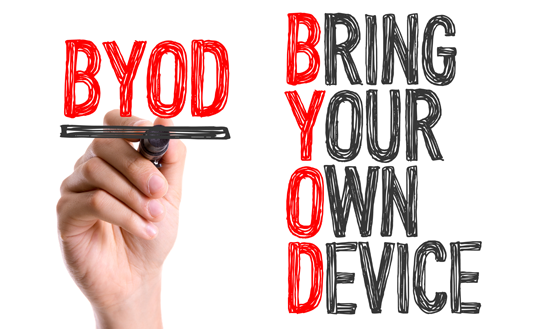A bring your own device policy (BYOD) or concept is gaining popularity, with 59% of organizations allowing their employees to use their own devices for work purposes. From working remotely to scheduled shifts, employees and employers are finding innovative ways to do their jobs using the model. It is cost-effective for the employer, plus it offers the freedom to employees. Sadly, it is not all rosy, given that allowing staff to use their personal devices carries inherent risks that can compromise sensitive company data. Are you wondering what security measures to employ to benefit from the policy? Let us delve in deeper and answer this and more. Before we go further, here are some key BYOD security tips:
● Communicating on unsecured devices
● Data loss
● Loss or theft of devices
● Removal of manufacturer imposed restrictions ( Jailbreaking)
● Software security issues and malware
Now let’s look at some of the measures you can use to implement BYOD in your business:
Have a clear policy on device use
Since your employees are using their personal devices to perform your work, they should be a guideline on what is acceptable and what is not. Setting boundaries is essential as it helps avoid work-life conflicts in such a model. For instance, let them know what kind of support they will receive if the device is broken, what they can install, etc. You also need to make it clear who owns what apps and data.
Be specific on the devices to be used
This can sound obvious but a very important step when implementing the BYOD policy. You need to be specific on what you mean by bringing your own device For instance, does it mean your employees can bring any device of their choice, e.g., iOS, Android, and the likes? Do you have a policy on the type of devices you support and those you don’t? The key is to have some order of preference when it comes to devices that can be used at work.
Use a mobile device management tool
One way to thrive in a BYOD policy plan is by having comprehensive visibility into the devices and user details. In essence, you will need to find a solution that offers a balance between total control for employers and total freedom for employees. By investing in MDMT, you can have:
● Controlled device updates
● Ease of remote management
● Increased network security
● Improved compliance
● Reduced administration needs
It sounds like a lot to do it manually, right? Well, you can invest in a mobile device management solution that also caters to small businesses if you are to attain BYOD success in your startup. A good tool will let you have complete control of all the devices in your business ecosystem, a feat that will help protect your business from attacks.
Have passwords compulsory on all BYOD devices
To prevent unauthorized access to the company’s data, you will need to have password sets on all BYOD devices. Since your employees are using their personal devices, you might not have control of who else uses the same device and for what purpose. Protect your data by securing it with unique passwords.
Restrict access
You must have heard of the principle of the least privilege. You ought to adopt it in your BYOD policy as it is one of the cybersecurity practices. It simply means giving a user the minimum levels of access or permissions needed to perform his/her job function. Eliminate unnecessary local administrator privileges and ensure all human and non-human users only have the privileges necessary to perform their job. Make sure to rotate passwords, conduct audits, and monitor accounts.
Have a comprehensive backup strategy
It is always important to have a backup plan in case of an attack. Given that you are not in the custody of the devices, you must ensure you have a comprehensive backup plan that can help you recover all data in case the devices are stolen, lost, or corrupted. Make use of both cloud computing and physical backup plans.
Have an exit strategy
When writing down your BYOD policy, ensure to include an exit strategy. Remember it’s a business, so employees come and go, only this time they are leaving with the devices. You will need to have a good plan on how to enforce the removal of access rights, emails, and all company’s data. As an employer, involve your employees in this process. For example, if you decide to do an “exit wipe ‘ensure that they are aware and have authorized a wipe command. Do this during their exit interview with the HR to avoid issues after they have left.
Wrap up
If you want to give your staff the freedom to bring their devices to work without compromising IT security, then you have to do it right. So, take time to develop a robust BYOD policy as you learn your organization’s needs.

